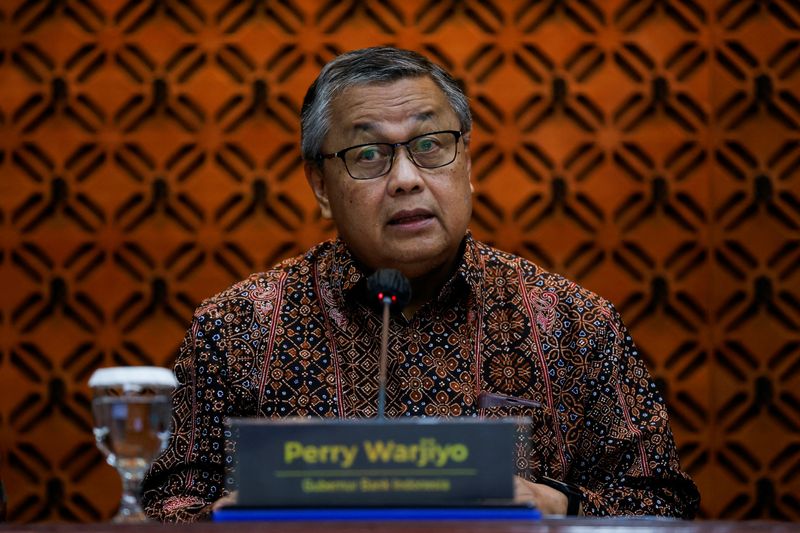JAKARTA (Reuters) -Indonesia’s central bank delivered its first rate cut in more than three years on Wednesday, just hours ahead of the widely expected start of the U.S. Federal Reserve’s easing cycle in efforts to bolster growth in Southeast Asia’s largest economy.
Bank Indonesia (BI) unexpectedly trimmed the benchmark rate by 25 basis points to 6.00%, its first rate cut since February 2021. Only three out of 33 economists polled by Reuters had predicted the move, while the rest expected no change.
The decision is consistent with BI’s expectation inflation will remain low in 2024 and 2025, and the rupiah staying stable, BI governor Perry Warjiyo said. It also aligns with BI’s efforts to bolster economic growth, he added.
A clearer direction on monetary policy moves by the Fed, a bigger drop in U.S. Treasury yields and tendency for the dollar to ease have given BI the window for the rate cut, he said.
“These three factors were very different from last month…so we did not have to wait for the Fed funds rate decision,” Warjiyo said.
“The time is right,” he said.
BI will continue to assess room for further easing, the governor said.
BI’s monetary policy stance is now a balance between stability and growth, Warjiyo said, switching from its previous “pro-stability” stance.
The rupiah had been under pressure earlier this year in response to changing risk appetite in global financial markets, but has since reversed those losses against the U.S. dollar to be trading slightly firmer than last year’s close.
The main stock index is also up 7.8% so far this year in a sign of returning capital inflows.
“Recent rupiah gains and markets pricing in a near certain cut by the U.S. Fed, likely offered BI the headroom to kick-start the easing cycle earlier,” said DBS Bank economist Radhika Rao. “For now, we expect one more rate cut by end year.”
The currency briefly weakened after BI’s announcement, but regained its losses to stand at 15,330 per dollar by market close.
Warjiyo said BI will continue using its monetary operation instruments to attract capital inflows, as well as conduct market intervention when necessary to support the rupiah.
Inflation returned to within BI’s target range in mid-2023 and has remained there since. The inflation rate in August of 2.12% was the lowest annual rate since February 2022.
The central bank maintained the 2024 GDP growth forecast at 5.1%, the midpoint of its 4.7% to 5.5% range, but growth in 2025 may be higher than the midpoint of its 4.8% to 5.6% outlook range, Warjiyo said.
These forecasts, Warjiyo said, suggested the economy was doing well, but it needed further stimulus to grow even faster.
BI said among factors for the rate cut was that it would help fiscal financing by lowering bond yields.
On Tuesday, a parliamentary budget committee approved a 6% rise in spending for the incoming government of President-elect Prabowo Subianto, who is set to take office next month.

Capital Economics’ Gareth Leather said inflation is unlikely to emerge as a concern for BI anytime soon, giving the central bank room to further cut rates.
The consultancy has revised its outlook for BI’s end-2024 benchmark rate to 5.50%, from 5.75% previously, in light of Wednesday’s cut and BI’s dovish commentary, Leather said.
To read the full article, Click Here

